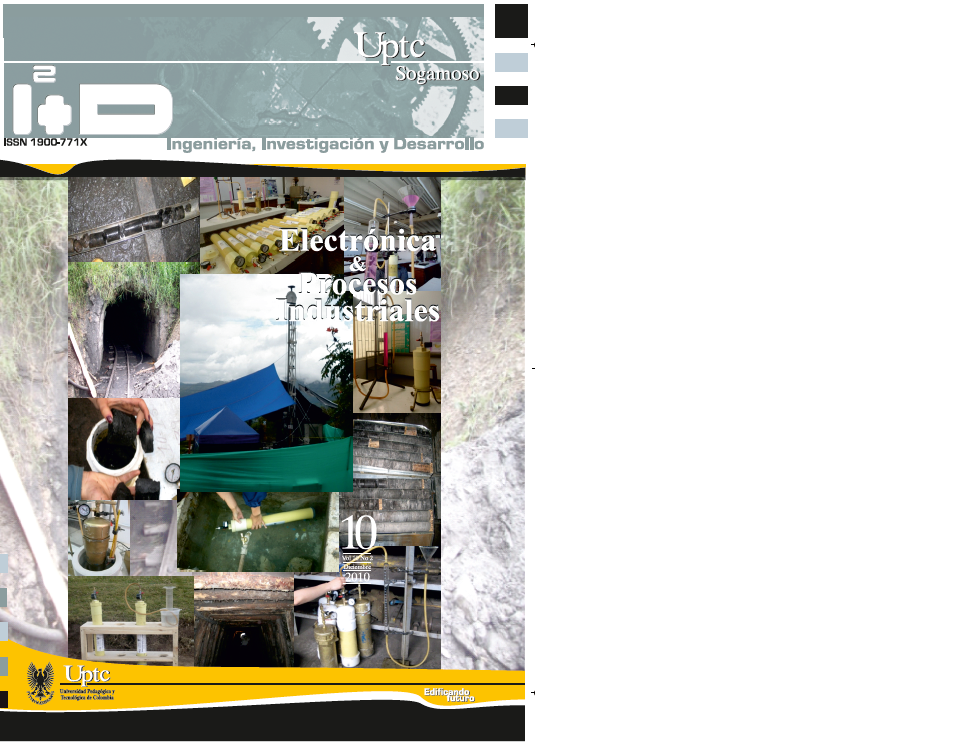Shallow seismic data acquisiction and processing on the bucaramanga fault in piedecuesta (Santander)

Abstract
The active, 220 km-long, left-lateral Bucaramanga Fault traverses the metropolitan area of Bucaramanga
(Colombia), home to over 1.5 million people. Imaging the shallow geometry of this fault is crucial for
understanding the recurrence of seismogenic tectonic processes that may have occurred in the recent geological past. Industry seismic sections across this fault do not resolve shallow strata; collection of high- resolution seismic data across the fault zone is of paramount relevance. In this work, a 2D high-resolution shallow seismic experiment (reflection seismic) is underway. An 18 lb sledgehammer is being used as energy source, generating seismic pulses with frequencies between 10 and 200 Hz. Data are being recorded with a 32 channel digital system. This equipment allows acquisition of both seismic data at sampling rates up to 0.25 milliseconds. Data was processed using hardware and software available at the INSTITUTO COLOMBIANO DEL PETROLEO of ECOPETROL. This project uses concepts and technology from oil industry and applying them to socially significant geological problems.
Keywords
seismic acquisition, seismic processing, Bucaramanga fault, 2D seismic
References
- Almeyda, W., (2033): Evaluación del Riesgo Sísmico del Sistema de Acueducto de Bucaramanga a partir del Estudio de Microzonificación Sísmica Indicativa de Bucaramanga (Colombia). Acueducto de Bucaramanga.
- Anderson, N., Akingbade, A., (2000): Overview of the Shallow Seismic Reflection Technique, University of Missouri.
- Beltrán, R. y Rey, A.(2002): Comportamiento Estructural asociado al sistema de fallas Bucaramanga-Santa Marta y diaclasas, para definir una red de drenaje subterráneo en el Macizo de Santander, sección entre Piedecuesta (Río de Oro) y Bucaramanga (Río Surata), Tesis de Grado, Universidad Industrial de Santander.
- Díaz, G.; y, Suárez, M.(1998): Evidencias Neotectónicas del Sistema de Fallas del Suárez en su Confluencia con el Sistema de Fallas de Bucaramanga, Tesis de Grado, Universidad Industrial de Santander, Bucaramanga.
- Evans, B.(1997) A Handbook for Seismic Data Acquisition in Exploration, Geophysical Monograph Series, Society of Exploration Geophysicists, Nº 7.
- Gaya, M.(2004): Procesado de Sísmica de Reflexión Superficial en el Complejo Turbíditico de Ainsa (Huesca-España), Tesis, Universidad Politécnica de Cataluña, p. 100.
- Gonzalez, G.; Boyce, J.; y, Koseoglu, B.(2003): Sísmica de Reflexión de Alta Resolución en el Estudio del Cuaternario de Áreas de Pie de Monte, Revista de la Asociación Geológica Argentina. Buenos Aires. 58 (1), pp. 78-84.
- INGEOMINAS. (2001): Zonificación Sismogeotécnica Indicativa del Área Metropolitana de Bucaramanga. Bogotá D.C., 2001
- INGEOMINAS, Zonificación de amenazas por movimientos de masa de algunas laderas de los municipios de Bucaramanga, Floridablanca, Girón y Piedecuesta.
- Hornbach, M.(2004): Development of Low Cost, Portable Multi-channel Seismic Data Acquisition System for Classroom Experiments and Independent Studies, Journal of Geosciences Education, Vol. 52, Nº 4, University of Wyoming, USA.
- Hunter, J.; Pullan, S.; Burns, R.; Gagne, R., Good, R. Shallow Seismic (1984): Reflection Mapping of the Overburden - bedrock Interface with the Engineering Seismograph-some Simples Techniques.
- Prado, R.; Malagutti, W., Dourado, J.(2001): The Use of Shallow Seismic Reflection Technique in Near Surface Exploration of Urban Sites, An Evaluation in the City of Sao Paulo, Brazil, Brazilian, Journal of Geophysics, Vol. 19, p. 3, 2002.
- WARD, W.; et al. (1973): Geología del Cuadrángulo H-12, Bucaramanga y H-13, Pamplona, Departamento de Santander y Norte de Santander. Ingeominas. Boletín Geológico Nº 21. Bogotá D.C. (1-3), pp. 1-32.